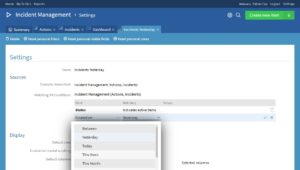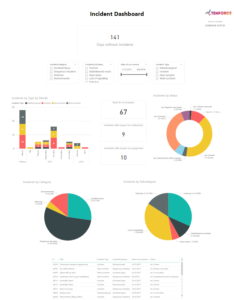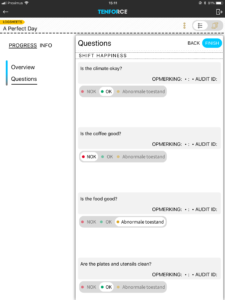A Perfect Day in Process Safety and Operational Risk
Earlier this year my attention was caught by a post within my LinkedIn network. It was debating “the perfect day”concept, accurately pointing out the need for progress and transparency in safety and operational risk management. It inspired me to give a brief overview of how technology can help manufacturing organizations improve results and foster a proactive safety culture.
Since managing safety and operational risk is of vital importance on production sites in chemical, oil, gas, and any other complex manufacturing sectors, it is important to implement transparent guidelines and objectives for all employees and contractors to make sure they are an active part of the safety culture. All in for mitigating operational risk.
Software solutions can help to facilitate the adoption of the safety culture and nudge people toward the correct behavior.
One best practice that is deployed on many sites and in many facilities around the world is the perfect day or the golden day reporting, which follows up a set of weak signals in behavior that could lead to a change in safety behavior. By making good behavior transparent and rewarding positive contributions, you can start a movement towards dramatic safety and operational excellence improvement on your site.
Here is how you start with it. Define a set of easy to measure goals and objectives that are measured each day. A golden rule for your golden day is to create a set of 5 to 7 goals. You have to pick a set that makes sense for your site and your context because each site has different topics or issues they want to get solved.
Here are some examples. A perfect day is a day:
- Without any incidents;
- With at least one improvement or near-miss reported;
- Without any unplanned downtimes;
- Without any unplanned or ad-hoc approved work that requires a permit-to-work;
- Without customer complaints;
- With at least one toolbox or training given;
- With at least one patrol tour or observation round completed;
- In which no production or other tasks get deferred;
- And with good food available for everybody.
The ideal mix takes into account both the lack of negative indicators (incidents, downtimes, complaints), as well as positive behaviours (preventive inspection, patrol tours, toolbox) and adds a motivational measures (such as good food, perfect conditioned control rooms, etc), which management could and should provide for their people.
Managing the Perfect Day KPIs with TenForce
Our TenForce solution has all capabilities that allow you to select and gather your Perfect Day indicators and automatically generate the reports and dashboards to make them visible and transparent for everybody. Since we are a solution that covers all aspects of process safety and operational risk, we have the ability to manage all processes (from incidents to permit-to-work and MoC, from audits to competence management and shift management) and extract key information on a comprehensible dashboard for all levels of the organization.
Our platform lets you enter the objective (using our easy-to-use smart-list filtering), so you can rapidly define the data filter you need (eg. all incidents registered yesterday).

And gather all the objectives you’ve set to be measured on a general dashboard that is published towards all coworkers.

You might wonder how you will measure the good food indicator. Well, we configured a ‘shift happiness’ checklist that shifts can and should fill-during their shifts. It is available via our web-based and our mobile interface. It is an easy hack and low-cost configuration addition in our shift management and daily operations module.

Hope this helps you forward! Many thanks to my LinkedIn network for the inspiration 🙂
We’re here to help you achieve a perfect day in process safety and operational risk. If we got you curious, put us to the test today!
